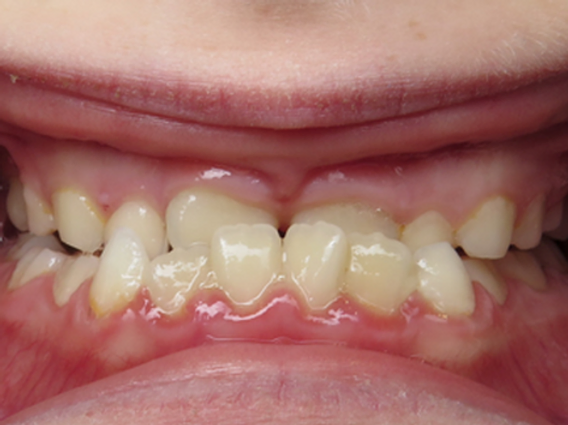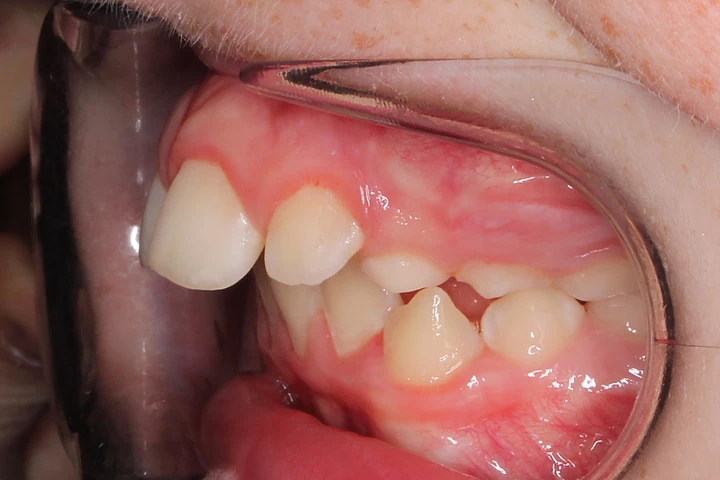The First Visit To An Orthodontist In Calgary Should Be At Age 7
We get asked, almost daily, about what the right time is for children to see the orthodontist in Calgary for the first time. The short answer is age 7. Both the Canadian and American Associations of Orthodontists recommend age 7 as the perfect time for an orthodontic evaluation.
This by no means indicates that all children require treatment at this age. The vast majority of children under age 10 do not require early orthodontic treatment. Age 7 happens to be the right age to determine what may be needed in the future.
Most 7 years olds will have lost at least a few of their baby teeth and the permanent teeth are beginning to become visible in the mouth. This allows us to see the size of those big grown-up teeth and how the teeth look like they are going to bite together.
If it appears that there will be a tooth size to jaw size problem or a bite problem, it is usually apparent. We can then advise if and when treatment will be needed. Most often, we simply watch these kids grow and determine treatment in the teen years when all grown-up teeth are in. This is usually age 11-15.
Let’s review a few common orthodontic problems seen in children that an orthodontist in Calgary would want to address:
Crowding
The baby teeth in the front of the mouth are usually quite a bit smaller than the adult teeth that come in after them. Crowding, like that above, is very common when this transition happens. Fortunately, the baby molars (near the back) are bigger than the adult teeth below and some space is gained near age 11.
Crowding can be corrected using appliances (like expanders or spacers), braces, or clear aligners (Invisalign, Angel, etc)
Crowding is a concern if:
1. There is so much crowding that the adult teeth may not be able to come in at all (impaction).
2. The crowding has made it so the teeth are biting together in a way that is causing damage to teeth or gums.
3. The esthetics of the crowding is harming the self-esteem of the child.
Spacing
Sometimes the teeth are smaller than the mouth. This will result in spacing between the teeth. This is not a concern unless esthetics is a concern or the teeth are in a position that makes them prone to trauma (too far forward in the mouth).
Underbite
Underbites are when the lower teeth (and sometimes jaw) are in front of the upper teeth and jaw. This can be a tooth problem (in minor cases) or a tooth and jaw problem (in moderate to severe cases).
This is one of the few problems that should be treated early. If the teeth and jaws can be corrected before the onset of puberty, there is a good chance that less complicated procedures (tooth extraction and jaw surgery) can be avoided or minimized later.
Overjet (often called overbite)
This is when top teeth are too far in front of bottom teeth. The top and bottom teeth should touch each other in the front. Called a Class II bite, correction is usually best completed during the growth spurt of puberty (age 10-13 in girls and 12-15 in boys)
The lower jaw and teeth often need to come forward to correct this type of bite and this happens readily during rapid teen growth. There is also the possibility that upper teeth need to come backwards in this bite. Your orthodontist will let you know the best solution for your child.
Monitoring your child’s growth is key in order to not miss the growth spurt (girls, especially, can grow very quickly).
Overbite
Excessive overbite is when the upper teeth overlap too much of the lower teeth (vertical problem). The upper and lower teeth should be visible when biting the back teeth together.
This is called a deep bite and is best corrected when all of the adult teeth are present. Sometimes the lower teeth are biting hard against the roof of the mouth and causing pain. If this is the case, there are solutions to provide comfort until complete correction can be done.
A deep overbite is one of the most common types of bites that an orthodontist in Calgary might see. In other parts of the world, different types of bites are more common.
Open Bite
This is essentially the opposite of an excessive overbite. Open bites are when the teeth do not overlap enough vertically. There should not be space between the upper and lower teeth from the front.
Bites like this make it difficult to bite through thin things like lettuce. The front teeth are not able to work in the way they were intended.
There are many causes for this type of bite:
1. Habits such as thumb, finger or blanket sucking.
2. Abnormal growth of the bones in the jaws.
3. Eruption issues with the new teeth coming into the mouth.
An orthodontist needs to evaluate the cause in order to advise when correction should happen.
Crossbite
A crossbite means that the teeth are biting on the wrong side of one another. All of the upper teeth should be slightly outside the bottom teeth. The photo above shows the left side of the bite entirely on the wrong side.
Crossbites can involve single teeth or groups of teeth. This bite problem is generally corrected as soon as possible as it can result in trauma to the teeth and/or abnormal growth of the lower jaw bone.
Early Loss of Baby Teeth
There are many reasons that baby teeth may be gone earlier than they should be. In the photo above, the black circle indicates where an adult tooth is supposed to fit between the 2 teeth we can see.
Baby teeth hold the space needed for the grown-up teeth to come in. If they are lost before the adult tooth is ready to come in, space can be lost and teeth can drift around. This often results in crowding or impaction (no where for the tooth to go so it stays in the bone). Your orthodontist can tell you when treatment should happen.
SUMMARY
The above list is by no means comprehensive. It does give a list of some of the most common tooth problems that exist. It is always critical that you speak to your local dentist or orthodontist to see what is right for your child.
Click HERE for a PDF e-book version of this post.
Please feel free to share the E-book with anyone that may be interested!














